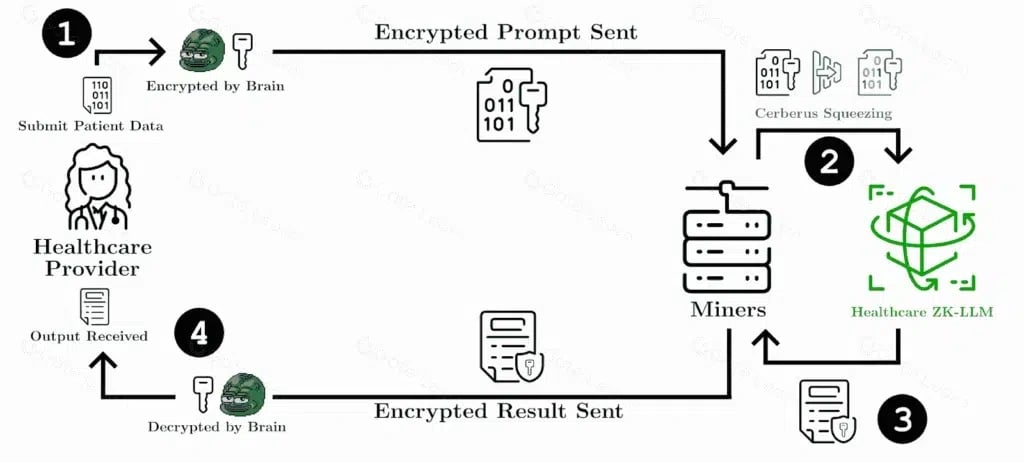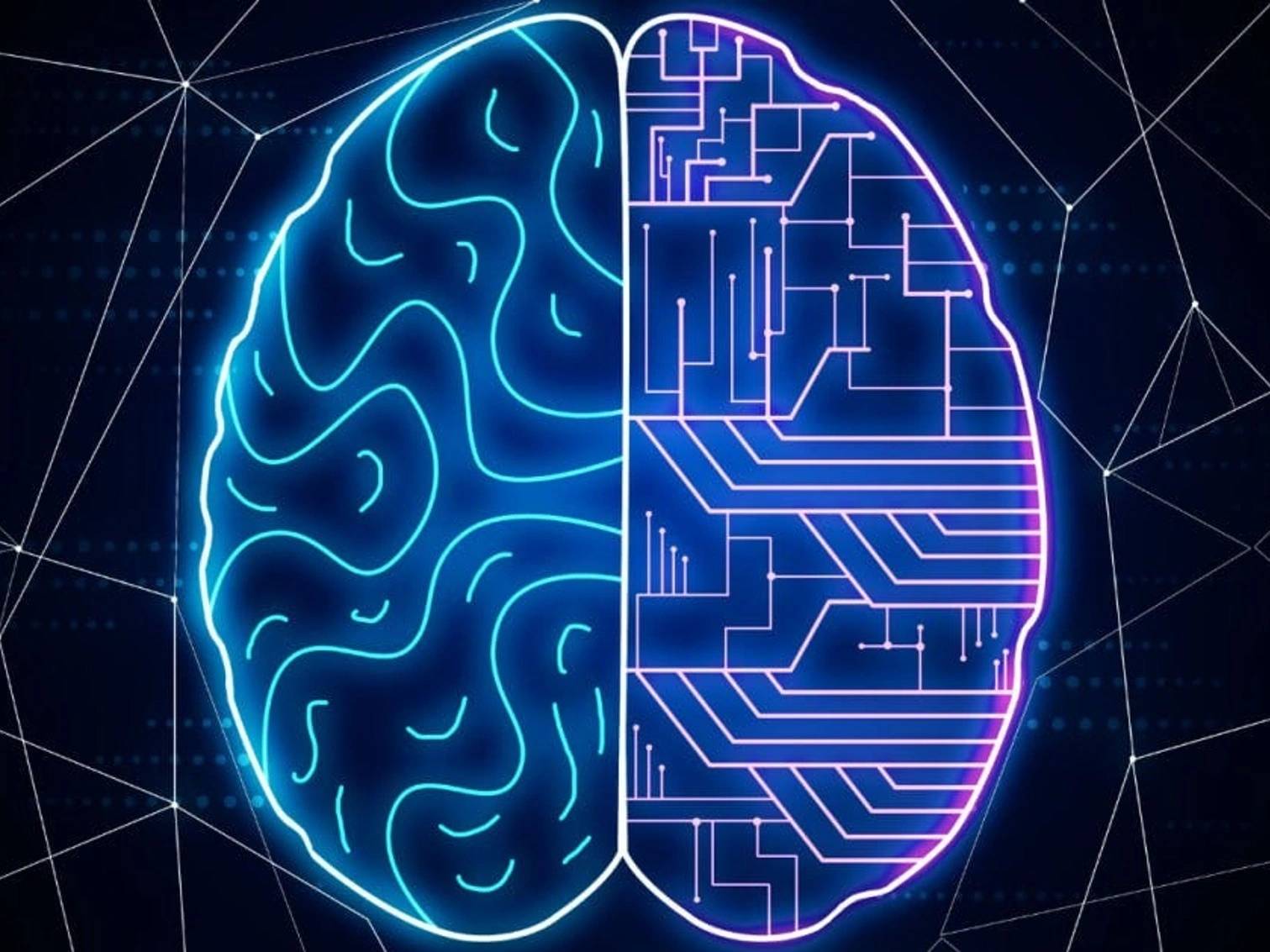위키 구독하기
Share wiki
Bookmark
zkLLM
zkLLM
zkLLM(Zero-Knowledge Large Language Models)은 제로지식 증명(ZKP)과 대규모 언어 모델을 결합하여 인공지능 애플리케이션의 개인 정보 보호 및 확장성을 향상시키는 기술입니다. 이 혁신적인 접근 방식은 민감한 데이터의 안전하고 효율적인 처리를 가능하게 함으로써 AI 및 블록체인 분야의 중요한 과제를 해결하는 것을 목표로 합니다.[1][5]

개요
제로지식 대규모 언어 모델을 의미하는 zkLLM은 암호화와 인공지능의 교차점에서 중요한 발전을 나타냅니다. 이는 제로지식 증명 시스템을 활용하여 언어 모델이 실제 데이터 내용을 공개하지 않고 개인 입력 데이터를 기반으로 출력을 처리하고 생성할 수 있도록 합니다. 이 기술은 특히 의료, 금융 및 개인 통신과 같이 민감한 정보를 다루는 분야에서 AI 애플리케이션의 데이터 개인 정보 보호 및 보안에 대한 증가하는 우려를 해결합니다.
zkLLM의 핵심 원리는 AI 모델이 암호화된 데이터에서 작동하고 기본 정보를 노출하지 않고 검증 가능한 결과를 제공하는 신뢰 없는 환경을 만드는 것입니다. 이러한 접근 방식은 개인 정보 보호를 향상시킬 뿐만 아니라 규제 산업에서 협업적인 AI 개발 및 배포를 위한 새로운 가능성을 열어줍니다.[2][3]
LLM의 추론 과정에서 ZKP를 활용하면 신뢰성과 개인 정보 보호를 제공할 수 있습니다. 모델 세부 정보를 공개하지 않고 특정 모델에서 출력의 출처를 확인하여 민감하거나 독점적인 정보를 보호할 수 있습니다. 생성된 증명은 검증 가능하므로 누구든지 출력의 신뢰성을 확인할 수 있습니다. 일부 ZKP 프로토콜은 확장 가능하여 대규모 모델과 복잡한 계산을 수용하므로 LLM에 유익합니다.[3]
기술
제로지식 증명(ZKP)
zkLLM의 핵심은 제로지식 증명의 구현으로, 한 당사자(증명자)가 다른 당사자(검증자)에게 진술 자체의 유효성을 넘어서는 어떠한 정보도 공개하지 않고 진술이 사실임을 증명할 수 있도록 하는 암호화 방법입니다. zkLLM의 맥락에서 이 기술은 AI 계산에 적용되어 다음을 가능하게 합니다.[5]
- 입력 데이터에 액세스하지 않고 AI 모델 출력 검증
- 모델 매개변수를 공개하지 않고 올바른 모델 실행 증명
- 협업적인 AI 교육 및 추론을 위한 안전한 다자간 계산
zkLLM의 기반이 되는 두 가지 주요 구성 요소는 다음과 같습니다.[6]
- tlookup: 심층 학습 모델에서 널리 사용되는 비산술 연산을 처리하도록 설계된 새로운 제로지식 증명 프로토콜입니다. 병렬 컴퓨팅 환경에 최적화되어 있으며 메모리 또는 런타임에 점근적 오버헤드를 추가하지 않습니다.
- zkAttn: tlookup을 기반으로 구축된 zkAttn은 특히 LLM의 어텐션 메커니즘 검증을 목표로 합니다. 정확성, 런타임 및 메모리 사용량의 균형을 맞추면서 증명 오버헤드를 효율적으로 관리하도록 설계되었습니다.
대규모 언어 모델과의 통합
zkLLM은 제로지식 증명 시스템을 대규모 언어 모델의 복잡한 아키텍처에서 작동하도록 적용합니다. 이 통합에는 다음이 포함됩니다.
- ZK 회로와 호환되는 형식으로 모델 매개변수 및 입력 데이터 인코딩
- LLM 계산의 규모를 처리할 수 있는 효율적인 증명 시스템 설계
- 신경망 연산을 위한 검증 가능한 계산 기술 구현
ZK 증명은 zkLLM에서 계산의 정확성을 증명하는 데 충분히 중요하지만, 이러한 강력한 AI 모델에 필요한 복잡한 계산을 단독으로 처리할 수는 없습니다. 이것이 완전 동형 암호화(FHE)가 등장하는 이유입니다.[6]
완전 동형 암호화(FHE)
완전 동형 암호화는 암호화된 데이터에서 직접 계산을 수행할 수 있는 암호화 기술입니다. FHE 방법은 계산 과정 전체에서 데이터의 보안을 보장합니다. 이 기술은 안전한 컴퓨팅 분야에 혁명을 일으킬 가능성이 있습니다. 데이터를 안에 넣고 상자를 열지 않고도 계산을 수행할 수 있습니다. FHE를 통해 zkLLM은 암호화된 사용자 데이터에서 계산을 수행하거나 작동할 수 있습니다. LLM은 감정 분석이나 텍스트 생성과 같은 복잡한 작업을 암호화된 데이터 자체에서 수행할 수 있으며, 해독할 필요가 없습니다. 개인 정보 보호를 위해 zkPs와 FHE는 서로 협력하여 동일한 목표를 달성합니다. [6]
잘못된 내용이 있나요?
